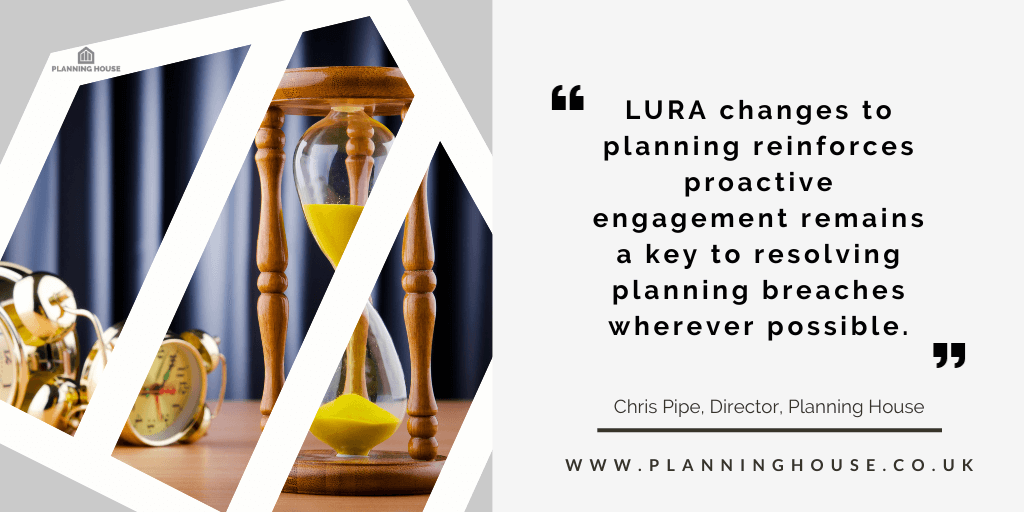Homeowners and developers, take note – the new Levelling Up and Regeneration Act (LURA) introduces several changes to planning enforcement timescales aimed at strengthening planning enforcement across England. Most notably, all breaches of planning control will now only become immune from enforcement after 10 years, rather than just 4 for certain operational changes.
While this extends the window local authorities have to investigate issues, it may prove tricky for more minor historic violations like conservatories or minor changes to properties. Our article 4 Years of 10 Year Rules for a Certificate of Lawfulness (CLEUD)? details that in most cases, a development becomes immune from enforcement if no action is taken within a certain timescale. Usually between 4-10 years depending on the development. The article in its current form is still correct until secondary legislation provides the details of when the changes will occur.
Another change is the new Enforcement Warning Notice (EWN) procedure as a pragmatic precursor to formal enforcement action in certain cases. When deployed thoughtfully, EWNs have the potential to resolve compliance issues without the need for heavier administrative or legal procedures.
Under the new system, planning/enforcement officers can opt to serve an EWN where a breach seems reasonably addressable through the swift submission of a retrospective planning application. This gives respondents a clear signal that the authority is aware of development issues, along with a chance to legalise the situation proactively.
Importantly, the legislation prevents appeals against subsequent enforcement steps when a linked application has already been received and assessed and found unsatisfactory. This eliminates undue delays and ensures authorities are not prevented from taking Follow-up compliance measures if negotiations over an application fail to produce an agreeable solution.
In many instances, EWNs offer a less adversarial path. Residents and businesses gain opportunity to remedy unintended errors, while councils need not immediately escalate minor disputes. When used judiciously and communicated properly, these new discretionary warnings could help enforcement do its job smoother and more efficiently. As long as authorities also preserve ability to pursue egregious violations robustly as needed. A balanced, case-by-case approach will likely serve planning regulation best.
Overall, these reforms aim to take some of the pressure off overburdened local enforcement teams. However, I’m not sure this is going to be the case as enforcement teams will have a longer timeframe to resolve these issues and as such more breaches in theory should be rolling through the system.
As always proactive engagement between enforcement, homeowners and developers remains key to resolving issues cooperatively wherever possible.
Related Content
If you believe that your development would qualify for the 4 year (or 10 year rule depending on the development) then you may be eligible for a CLEUD, and you can submit an application. However, the onus to prove your eligibility lies entirely with you – so get your paperwork in order. Seek assistance if you’re unsure – do not go into the process with any gaps in evidence.
We’ve published a Practical Guide for Certificate of Lawful Development covering how to apply, what proof you need to submit, timescales, costs etc. If you have any questions or need any help with the CLEUD application process then please get in touch.
We’ve also produced other content linked to this topic:


